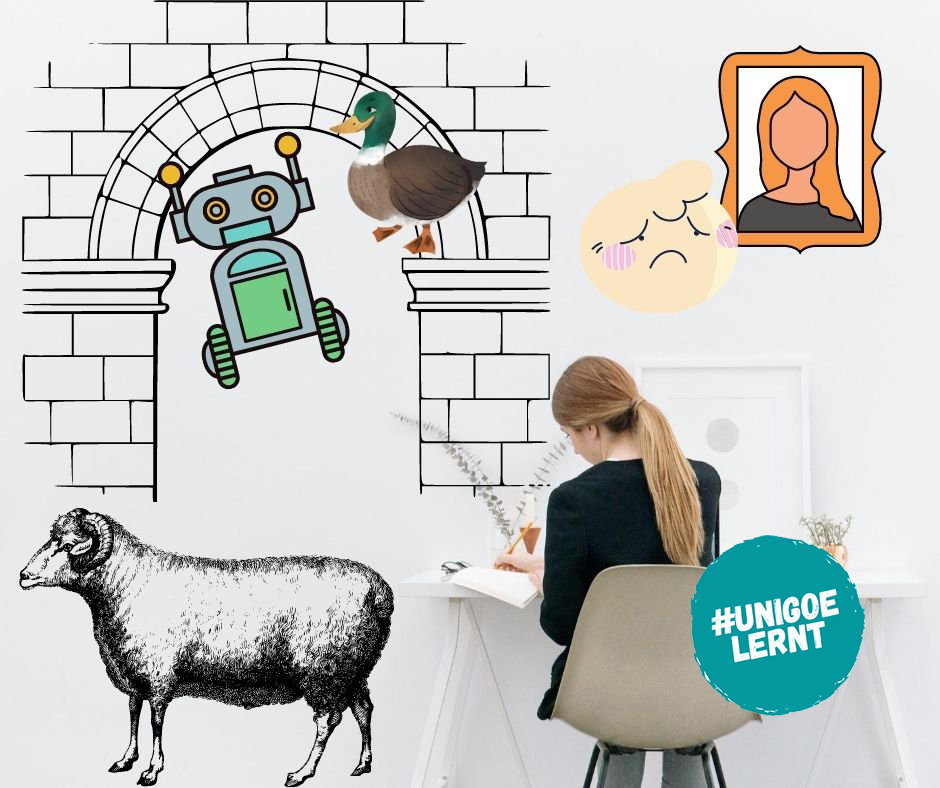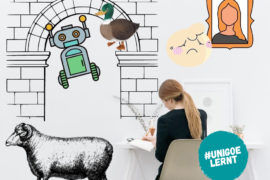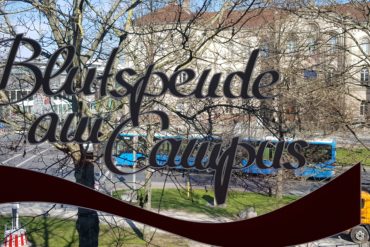I used to be pretty good at learning something by heart. Poems, dates, citrate cycle – no problem during school. Now, having almost completed a very seminar paper heavy university programme, this skill has pretty much disappeared.
My technique for learning by heart is simple: I always like to write things down. If I want to memorize them, I will read through them again and again, until I know them. On a good day I would think of a memory hook. Not really imaginative and, at least in the past years, not particularly durable. The majority of the things I learned only make it to the examination, not further. That is why Annika Köhne of the Central Student Counselling has a recommendation for me: the method of loci.
The method of loci is about visualizing the facts you need to learn at familiar places. “The best thing is to start in one room. If there are too many items to learn, one can, so to say, step out of the door and use the other rooms of the house”, explains the study advisor. Any route one uses frequently is possible. Like the way to university, to the bus station or the old school way. One could even use their own body. “The main point is: One does not need to strain to remember how the room looks like. It must be something familiar.”
I do not need to write any exams, but I want to try out the method of loci anyway. Due to a blatant general education gap, I decide to take on regional politicians: Ten people (Annika Köhne advises to start slowly), their duties and the corresponding faces. This should be doable. Before I start, I am sceptical. I have already often heard of the method of loci in the media; Sherlock Holmes for example constructed himself an entire Memory Palace. “Theoretically it is possible to use the method for a huge amount of information, but therefore you need to be trained”, explains Annika Köhne. If you are working with the room or on your own body, indeed you just have limited options – but memory athletes or learners that are trained should be able to expand the method almost infinitely.
And this supposed to help me, too? I am not sure how to start and at first I stick to old behaviour patterns: I write things down. Yet, while I note the politicians one after another, I realize that some names are perfect for visualizing. Ms. Schäfer – German for shepherd – herds sheep, Mr. Mäurer – German for bricklayer – is building walls. Even some departments are easy to locate in my room: the environmental senator is placed with the plants, the ministry of the interior is in the wardrobe, the sports department sits on the yoga mat… Annika Köhnes words are order to me: “The more figurative you have something in mind, or an association thereto, the better you can memorize something.” Of course the method is also applicable to other contents. The ZSb usually works with the most dangerous bacteria in their workshops on learning methods, for example. How to visualize Enterobacteriaceae, Pseudomonas aeruginosa and others? Even here: Creativity wins! What does the term sound like in your mother tongue? Which personal associations come up if you hear the word? For me it is totally clear: A robot duck and an angry Mona Lisa. As I said: personal associations and mother tongue. You might think of something completely different.
When starting my project it took me some time to visualize everything, but at least I did creatively grapple with the matter during this time. When I was “walking” through my “room” afterwards, I quickly realized which pictures I can memorize easily and where is still room for improvement. Annika Köhne recommends to walk through the room or track for the first time after ten minutes and to repeat everything after 24 hours, after a week and shortly before the examination. Due to this, the method is not really intended for short-term rote learning the night before the exam. Although this would be better than not working with the subject matter at all, says the study advisor, the method should be implemented at least one week before an exam.
The method is useful in many different scenarios: Not only terms, but even succession orders, e.g. if you want to hold a presentation without notes, are possible. “Catchwords, lists, sequences”, Annika Köhne is enumerating. “That is what Loci is good for. Also, because it is not possible to store that much information.” And this is the weakness of loci: When it comes to complex contents or contexts, it is not helping anymore.
Nevertheless, the method fully convinced me. My scepticism from the beginning faded away pretty quickly when I realized, that visualizing the information is not that difficult for me. Furthermore, I “walked my room” way more often than recommended: While shopping, riding my bicycle, anytime my brain was unoccupied. In addition to that, I experienced a small motivation boost: Once I realized, how good the method was working for myself, I was much more motivated to learn more facts. I already look forward to visualizing the other rooms of my flat, my way to university, and my old childhood bedroom with some facts and information.
Disclaimer
My situation is constructed. I am not learning for an examination, no grade depends on my ability or failure. I just want to prove something for myself. Students who are faced with an exam surely have other amounts of facts to learn, but simultaneously a whole different incentive than me. Testing is surely worth it!
Click here to see the entire Instagram highlight of the #unigoelernt series with all its expert tips! [in German]








